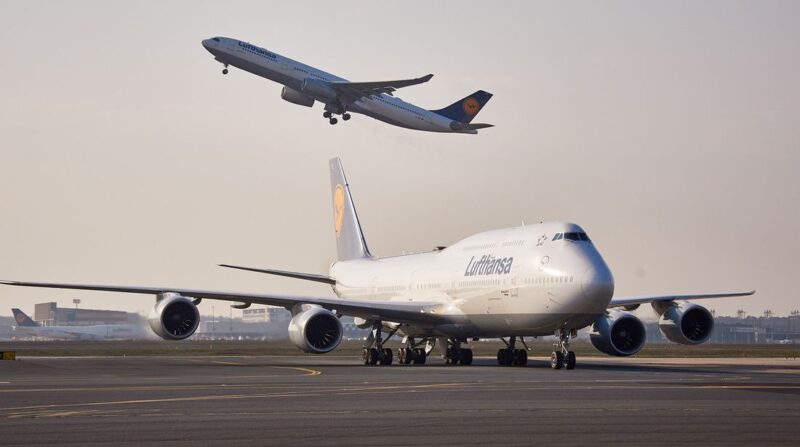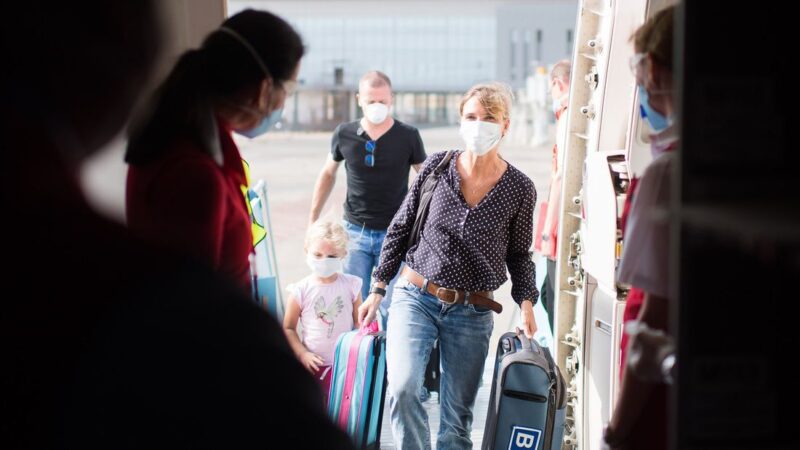The anti-contagion measures that are starting to emerge for German commercial aviation give us a framework for what could happen for the rest of Europe, both for airliners and for private jets. A private jet presents fewer possibilities of contagion thanks to the fact that you can board in 20 minutes without having to wait in line at crowded airports. What’s more, we normally fly on private jets with family, or colleagues, up to a maximum of ten. However, it would be prudent to consider the measures proposed for commercial aircraft, even when flying in a private jet.
A mouthguard and fever measurement could soon become everyday life in air traffic: representatives of German airlines and airports have jointly outlined their plans for a “resumption phase” after the corona lockdown. 20 points are included. The free middle seat is not.
Keeping distance is the top priority in Corona times.
It will remain so for a while, even if the first signs of relaxation are beginning to appear in everyday life. One and a half meters away from fellow human beings can hardly be kept in an airplane. In general, a passenger cabin is badly suited for “social distancing” – even if airlines do not release the middle seats for booking, as is currently the case with Lufthansa. A measure that Easyjet boss Johan Lundgren is also aiming to restart his airline: “Middle seats will probably remain vacant initially,” said the CEO in mid-April.
Center seat and mask requirement
In contrast, the vacant middle seat does not appear in the concept paper of the German industry giants. Instead, airlines and airports jointly formulated 20 other points that are intended to ensure the health protection of passengers during a “defined resumption phase” after grounding. The most important aspect here: If clearance on board is not possible, then at least a mask is required. “When boarding, on the plane for the duration of the flight and when disembarking, make sure that every passenger wears a protective mask,” says the concept. Passengers should therefore be obliged to “carry and wear a protective mask” if they want to fly with them. According to the will of the industry representatives, this rule should not only apply to domestic and European flights, but also intercontinental.
Fewer crowds at the airport
Other key measures primarily concern processes outside the aircraft. For example, there should be airier queues at airports, more transport buses should be used and boarding and alighting should also take longer in the future. The same applies to baggage handling. In addition, the paper suggests “wherever possible and targeted” temperature screening with special probes and random fever measurements. The paper does not mention rapid blood tests that Emirates recently talked about. Instead, self-disclosure at check-in should make it compulsory that you do not have an infectious disease and, above all, do not suffer from Covid-19. The free choice of seat is no longer available.
“Resume phase” for at least six weeks
The measures are initially planned for a transition period of six weeks. The paper does not reveal when this should begin. The Frankfurter Allgemeine Zeitung also notes that it is open whether the 20 points are a voluntary obligation of the German aviation industry or whether there will soon be state requirements. “Talks with ministries are pending, and at least a European vote is considered desirable,” the newspaper said.



